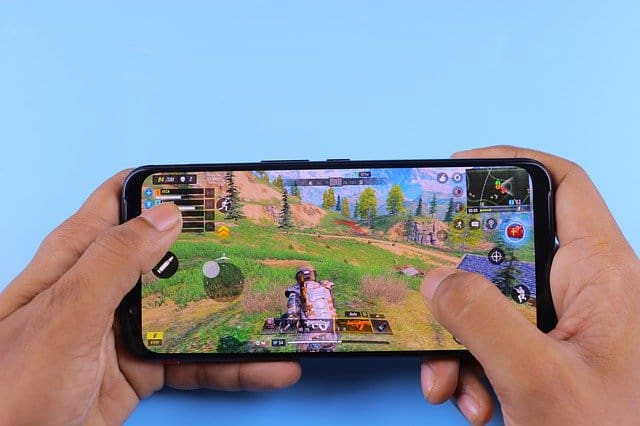In the ever-evolving digital landscape, web design is at the forefront of shaping the way we interact with the online world. Design trends come and go, but some contemporary approaches are leaving a lasting mark on the web, ushering in a new era of user experience and aesthetics.
In this blog post, we’ll delve into the exciting world of contemporary web design trends that are paving the way for a more immersive, user-friendly, and visually appealing online experience.
1. Dark Mode
Dark mode, once a niche feature, has evolved into a mainstream web design trend. This aesthetic choice not only provides a stylish, sleek appearance but also offers practical benefits, such as reducing eye strain and extending battery life on mobile devices.
From social media platforms to e-commerce websites, dark mode is becoming a staple, allowing users to switch between light and dark themes to suit their preferences. The contrast between dark backgrounds and vibrant content elements creates a striking visual impact.
2. Minimalism and Simplicity
The principle of minimalism in web design emphasizes simplicity, clarity, and the elimination of unnecessary elements. Clean, uncluttered layouts with ample white space and straightforward typography are not only visually appealing but also enhance user engagement and comprehension. Minimalist designs convey a sense of elegance and professionalism, making them a popular choice for businesses and personal websites alike.
3. Neumorphism
Neumorphism is a design trend that combines elements of skeuomorphism and flat design. It creates a unique visual style by simulating real-life objects with soft shadows and highlights, resulting in a tactile and three-dimensional appearance. Neumorphism is gaining ground as it adds depth and character to user interfaces, offering a fresh take on the blending of the digital and physical worlds.
4. Immersive Experiences
Modern web design is all about creating immersive experiences. Techniques like parallax scrolling, micro-animations, and videos engage users by providing dynamic and interactive elements. These features captivate visitors, making them more likely to stay longer on a website and explore its content. The ability to seamlessly navigate and interact with a site not only enhances user satisfaction but also leaves a lasting impression.
5. Asymmetrical Layouts
Web designers are breaking free from the rigid constraints of grid-based layouts. Asymmetrical designs introduce an element of chaos and unpredictability, which can be visually compelling. They often balance the asymmetry with careful placement of key elements, resulting in a dynamic and engaging design that stands out in a world of uniform grids.
6. Accessibility-Centric Design
An important and growing trend in web design is an emphasis on accessibility. Designers are increasingly considering the needs of users with disabilities, ensuring that websites are inclusive and compliant with accessibility guidelines. This involves providing alternative text for images, ensuring keyboard navigation, and using semantic HTML to enhance the experience for all users. Prioritizing accessibility not only expands a website’s reach but also reflects a commitment to inclusivity and social responsibility.
7. 3D Elements and Illustrations
Three-dimensional visuals and illustrations have become an integral part of modern web design. They add depth and character to websites, making them more visually appealing and engaging. Whether it’s using 3D graphics for product displays or incorporating whimsical hand-drawn illustrations, these elements contribute to a unique and memorable online experience.
8. Responsive Design and Mobile-First Approach
With the proliferation of smartphones and various screen sizes, responsive design has become a fundamental requirement for websites. Designers are adopting a mobile-first approach, ensuring that websites are optimized for smaller screens and progressively enhanced for larger ones. This strategy guarantees that users receive a consistent and user-friendly experience regardless of the device they are using.
9. AI-Powered Chatbots and Personalization
Artificial intelligence is playing an increasingly significant role in web design. Chatbots, powered by AI, provide instant customer support and assistance, enhancing user experiences. Additionally, AI is employed to personalize content delivery based on user preferences and behavior. This tailoring ensures that visitors receive relevant and engaging content, increasing user retention and satisfaction.
10. Sustainability and Eco-Friendly Designs
In an age of environmental awareness, sustainability and eco-friendly web design practices are gaining traction. Designers are focusing on creating websites with minimal environmental impact. This includes using sustainable hosting, optimizing for energy efficiency, and promoting green initiatives. Ethical web design aligns with the broader sustainability goals of society and demonstrates a commitment to environmental responsibility.
Conclusion
Web design trends are continually evolving, and as we move forward, the possibilities for innovative and engaging online experiences are expanding. To ensure that your website remains at the forefront of online design, it’s essential to stay informed about the latest trends and be prepared to adapt and innovate.
With the help of a web development agency, you can ensure that your online presence is up-to-date and optimized for the user experience. So, don’t hesitate to embrace these contemporary web design trends and be ready for the exciting opportunities that lie ahead in the world of digital design.




